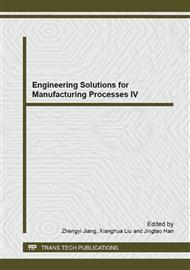p.3
p.9
p.14
p.22
p.28
p.32
p.37
p.43
The Modeling Design of Plastic Ashtray Technology and Rapid Prototyping Technology Based on Reverse Engineering
Abstract:
Reverse engineering is a process of using 3D geometric modeling method to reconstruct actual objects CAD model based on these points, which is used physical digital measuring equipment to measure the three-dimensional coordinates of points on the surface of the object accurately and rapidly. Based on reverse engineering technology as the theoretical basis, the paper used three-coordinate measuring machine to measure ashtray surface data. After data was be handled, which was used to reconstruct 3D entity in Pro/E software. Last, the 3D entity of ashtray was printed out through rapid prototyping machine, which can be achieved by physical sample to rapid manufacturing of products, shortening production cycle, reducing production costs.
Info:
Periodical:
Pages:
9-13
Citation:
Online since:
February 2014
Authors:
Price:
Сopyright:
© 2014 Trans Tech Publications Ltd. All Rights Reserved
Share:
Citation:


